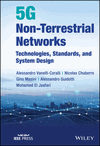Release 18 and Beyond
Summary
Prior to the advent of 5G, satellite and mobile networks were designed independently from one another and were addressing separate user markets. With the 5G standard, Non-Terrestrial Networks (NTN) have been introduced as added network components to cellular networks with the primary objective to extend the service coverage in unserved or underserved areas. The definition of the 6G system offers an opportunity to unify natively both “terrestrial” network and NTN components at system architecture and protocol level allowing a smart combination of both. In this chapter, the added value and characteristics of the NTN component of 5G system are recalled and its evolution in the context of beyond 5G systems including 6G is highlighted. When discussing 6G, one should distinguish the capabilities of 5G, which will be enhanced from the new capabilities that will be enabled. For both cases, the NTN component has a specific role.



